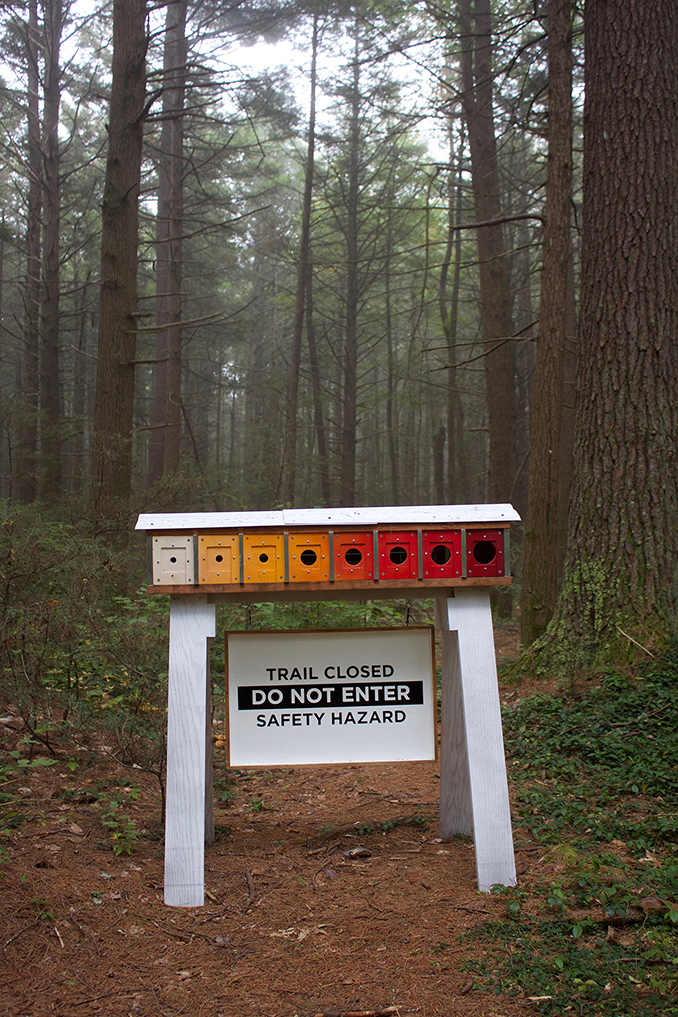
Hemlock Hospice is a year-long, art-based interpretive trail by David Buckley Borden, Aaron M. Ellison, and their team of interdisciplinary collaborators. This immersive site-specific science-communication project tells the story of the ongoing demise of the eastern hemlock tree at the hands (and mouth) of a tiny aphid-like insect, the hemlock wooly adelgid (HWA) from Asia. Scientists project that the hemlock forests in Massachusetts will functionally disappear by 2025. While telling the story of the loss of eastern hemlock, the Hemlock Hospice trail addresses larger issues of climate change, human impact, and the future of New England forests.
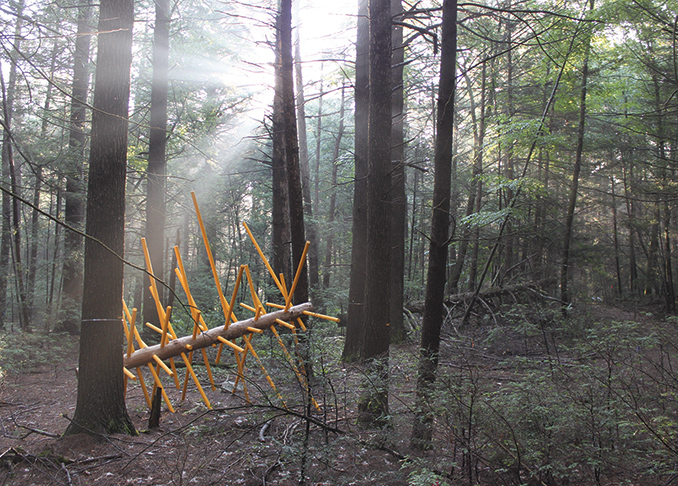
David Buckley Borden, an interdisciplinary artist and designer, has been in residence at the Harvard Forest for the past year as a Charles Bullard Fellow in Forest Research. During that period, he has collaborated with Harvard scientists on interdisciplinary art-design-science communication projects involving landscape installations and art-based interpretive trail design. Created in collaboration with Senior Ecologist Aaron Ellison, and designed to communicate the latest scientific research being done at Harvard University’s center for forest research and education located in Central Massachusetts, the Hemlock Hospice installation features 18 new sculptures installed along an interpretative trail through the hemlocks of Harvard Forest.
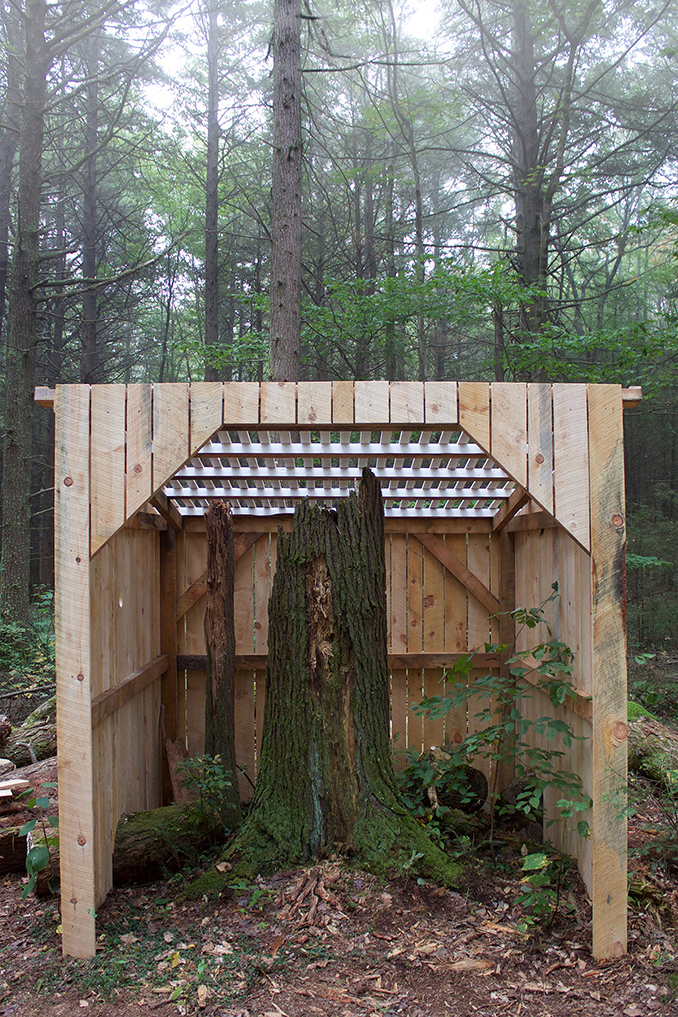
Says Borden, “Artists and designers can play a unique role in communicating the reality of science. As environmental challenges become more critical, scientists are increasingly asked to provide vital information to policy makers, community groups, and individuals. During my time as a Bullard Fellow I have been exploring the question, ‘How can art and design support science communication to foster cultural cohesion around ecological issues and help inform ecology-minded decision making.’ The urgency of getting a population of non-scientists to both understand and care about aspects of ecology is real. And, ecological awareness is a powerful mechanism for changing how we think about our relationship with our environment.”
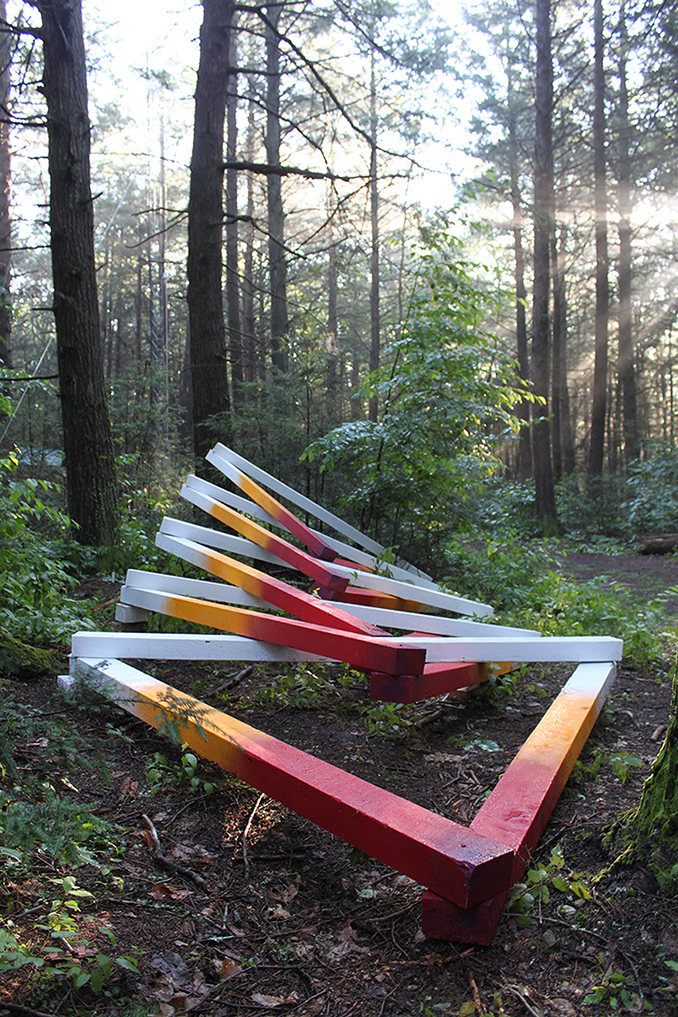
“A field-based installation that blends science, art, and design, Hemlock Hospice respects the eastern hemlock and its ecological role as a foundation forest species; promotes an understanding of the adelgid; and encourages empathetic conversations among all the sustainers of and caregivers for our forests—ecologists and artists, foresters and journalists, naturalists and citizens—while fostering social cohesion around ecological issues,” adds Ellison. “As a scientist, I study how our forests may respond to the loss of this ‘foundation’ tree species,” he continues. “As a human being, I cry, I mourn, and I look to the future for hope. David’s installation will tell the story of the eastern hemlock in a new way, communicating why so many scientists and poets care about it, and what their plight tells us about the future of our environment.”
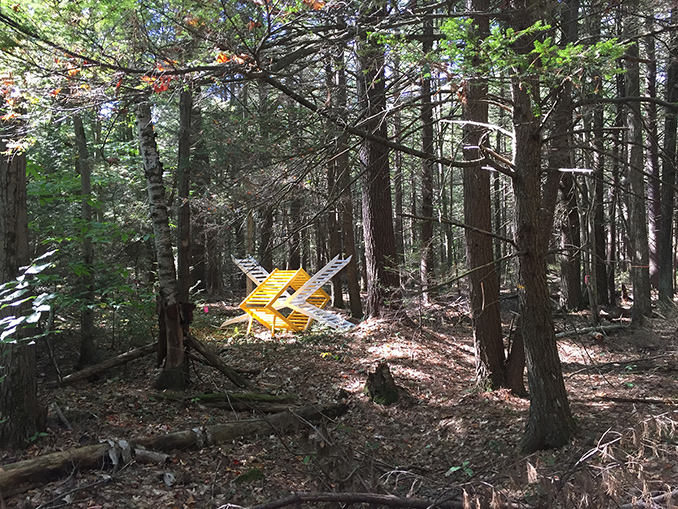
The Hemlock Hospice trail takes visitors on a journey of the disappearance of a species at the Harvard Forest, while inside the Fisher Museum, the accompanying exhibition, curated by Penelope Taylor, extends the story of the Museum’s famous dioramas chronicling the history of New England’s forests until the1930s. Borden continues the story from 2016 onwards with a collection of silkscreen prints, illustrations, and art-objects collaboratively created as part of his Fellowship. The work, on display until November 2018, imagines a future ecology supported by a new creative wave of interdisciplinary science-communication.
Hemlock Hospice is more than an art-design-science collaboration; it is also an educational initiative. A self-guided trail map is available at the Fisher Museum, and public workshops and print and social media tools will promote reflection, critical thinking, and creativity among scientists, designers, educators, humanists, and the general public.
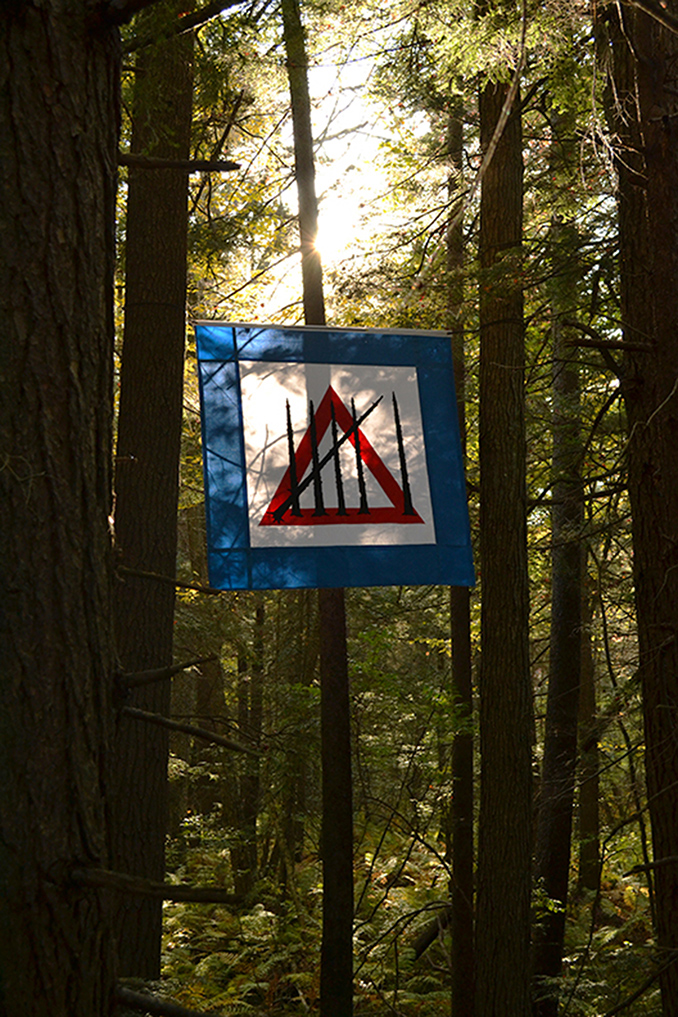
Credits | As captioned
